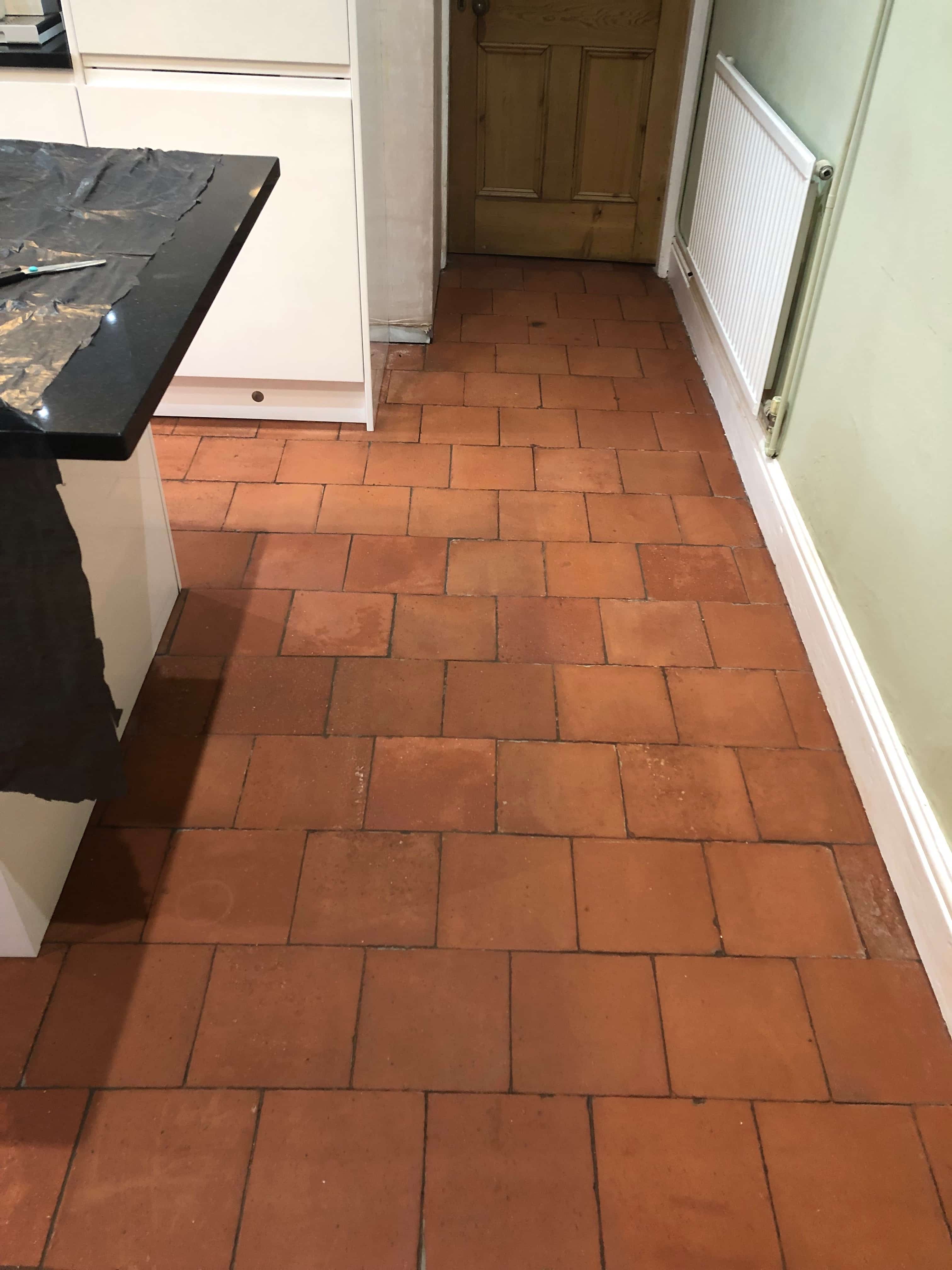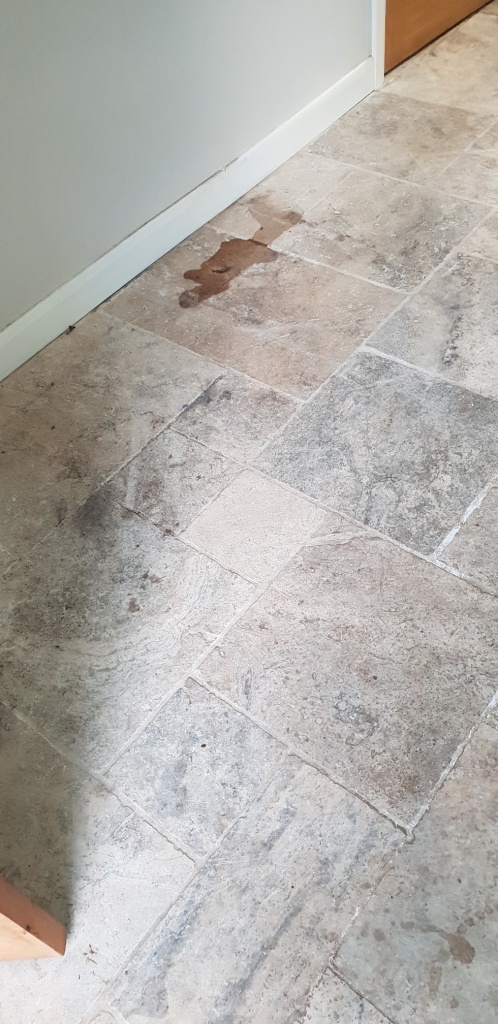Once that was done, I went over with the samples to inspect the floor and whilst I was there marked all the damaged tiles that would need lifting and replacing. The house was quite old and many of the tiles had been badly affected by salt damage at some point in the past. Given the age of the property it could have been from efflorescence or it is possible it was flood damage as the property was about 700m from the River Salwarpe which has a history of overflowing. In fact, Droitwich Spa is known for its salt deposits and became a Spa town when the salt industry started to dwindle towards the end of the 19th century.
I worked out a quote to repair the floor, then clean and seal it which was accepted, and the work scheduled.
Cleaning and Repairing a Quarry Tiled Kitchen Floor
The first job was to remove the damaged tiles from the floor using various tools to prise the tiles away from the substrate. I then used a self-leveller to level the screed. All the new tiles would need cutting so I used a Bridge Saw with a diamond blade and proceeded to cut all the tiles to shape. The replacement tiles were then fixed in place using flexible adhesive and left to dry and then grouted. |
 |
The following day I moved onto cleaning the tiles. Tile Doctor Remove and Go was used to tackle any previous sealers. leaving the product to dwell for the required time and then working it into the floor with a rotary scrubbing machine. I then used Tile Doctor Acid Gel to remove old grout smears and combat any efflorescence the floor was encountering, before vacuuming the remaining slurry with a wet vacuum. Once I was happy the floor was as clean as it could be, I left the tiles to dry overnight so they could be sealed the following day.
 |
 |
Sealing a Quarry Tiled Kitchen Floor
I returned the next day and began by using a moisture meter to ensure the floor was dry. All was well so I proceeded to seal the floor using Tile Doctor Seal and Go Extra, a semi-gloss breathable sealer that will allow moisture to rise through the tile unimpeded which was important considering its history. The floor required five coats of sealer to completely seal the floor and the customer was very pleased with the result as indicated in the feedback below:"We are very happy with the work that Mark carried out for us. Mark was very professional and always responded quickly to any enquiries that we had. We have recommended Mark to our friends and family. Thank you. Lydia B, Droitwich Spa"

Source: Quarry Tile Cleaning and Repair Service in Droitwich-Spa, Worcestershire










